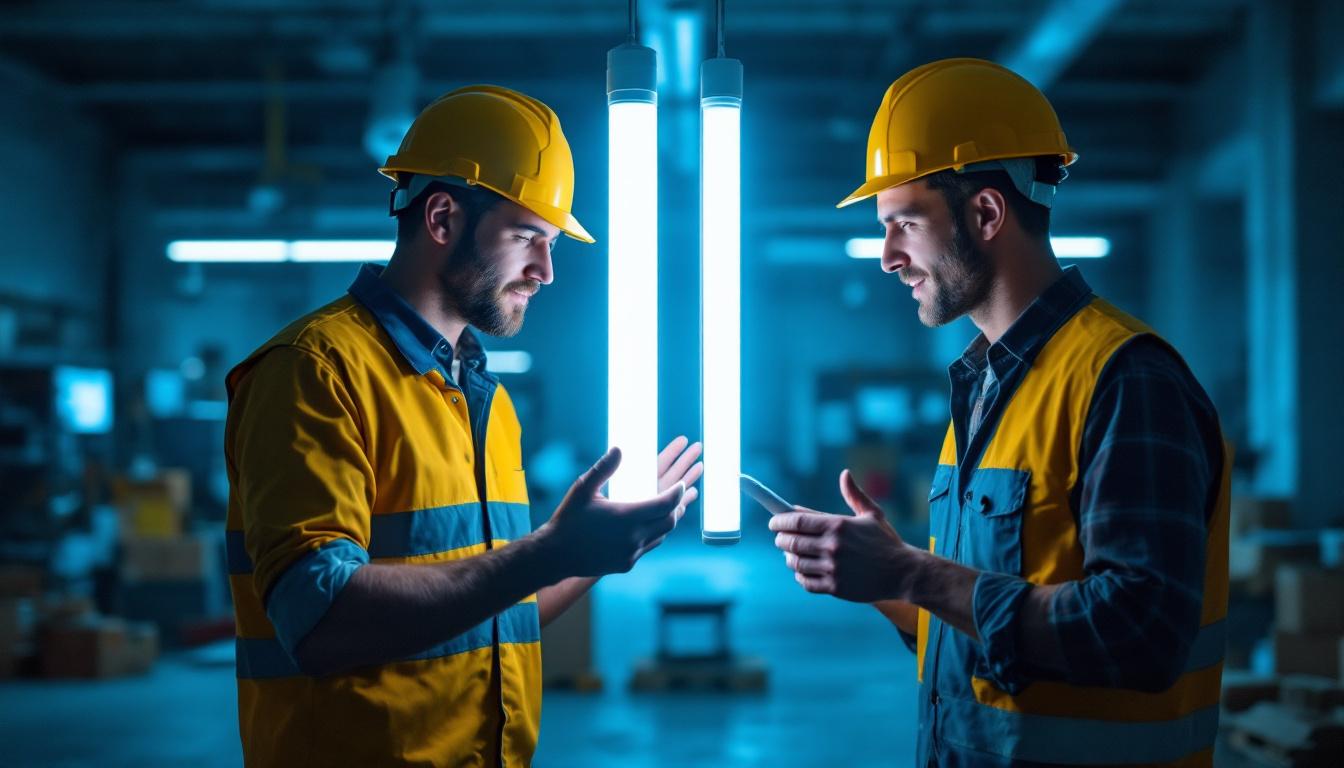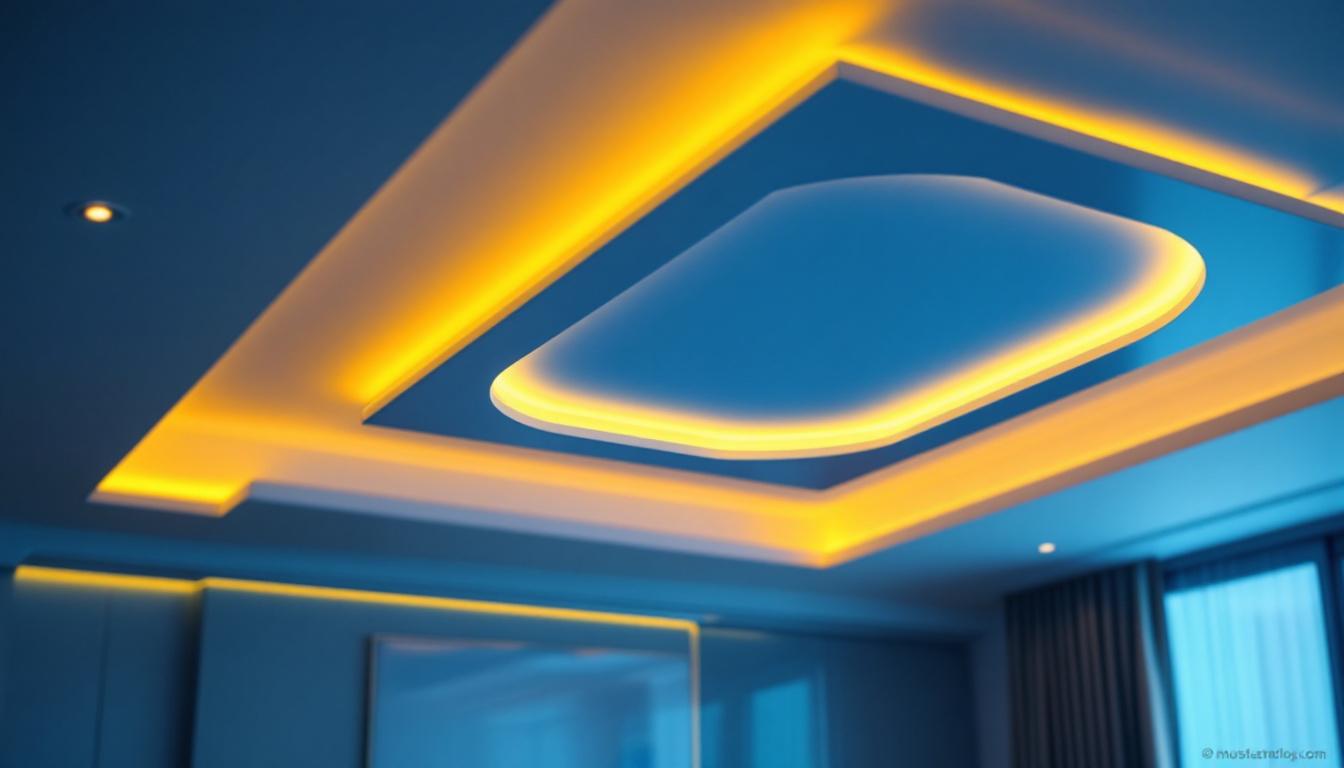
As the demand for energy-efficient lighting solutions continues to rise, the evolution of fluorescent lighting systems has become increasingly relevant. Among the key components that contribute to the functionality of these systems is the ballast. Understanding the role of the ballast and the implications of changing it is crucial for lighting contractors looking to stay ahead in the industry.
Ballasts are essential devices that regulate the current to fluorescent lamps. They serve to provide the necessary starting voltage and limit the current flowing through the lamp during operation. The type of ballast used can significantly affect the performance, energy efficiency, and lifespan of fluorescent lights.
There are primarily two types of ballasts used in fluorescent lighting: magnetic and electronic. Magnetic ballasts have been the traditional choice, utilizing electromagnetic coils to regulate current. While they are generally less expensive, they tend to be bulkier and less energy-efficient.
On the other hand, electronic ballasts have gained popularity due to their compact size and improved energy efficiency. They provide a more stable current and can drive multiple lamps, making them a preferred choice for modern lighting designs. Moreover, electronic ballasts can operate at higher frequencies, which not only enhances light output but also minimizes the flickering often associated with fluorescent lighting. This results in a more pleasant visual environment, particularly in spaces where people spend extended periods, such as offices and classrooms.
Upgrading to electronic ballasts can yield numerous benefits for both contractors and end-users. These ballasts typically result in lower energy consumption, reduced flickering, and quieter operation. Additionally, they often have a longer lifespan, which translates to lower maintenance costs over time.
For contractors, recommending an upgrade can enhance client satisfaction and position them as knowledgeable professionals in the field. Providing clients with energy-efficient options not only meets their needs but can also contribute to sustainability goals. Furthermore, many utility companies offer rebates and incentives for upgrading to energy-efficient lighting solutions, which can make the initial investment more appealing. As businesses increasingly prioritize sustainability, the transition to electronic ballasts aligns with broader environmental initiatives, showcasing a commitment to reducing carbon footprints and promoting eco-friendly practices.
Additionally, the advancements in ballast technology have led to the development of smart ballasts that can integrate with building management systems. These smart ballasts can adjust lighting levels based on occupancy or natural light availability, further optimizing energy usage. Such innovations not only enhance the functionality of fluorescent lighting but also pave the way for more intelligent and adaptive lighting solutions in the future, catering to the evolving needs of modern spaces.
Determining the right time to change a ballast can be a critical decision for lighting contractors. Several indicators can signal the need for a replacement, ensuring that the lighting system continues to operate effectively.
One of the most obvious signs of a failing ballast is flickering or dimming lights. If the fluorescent lamps are not starting promptly or are exhibiting inconsistent brightness, it may be time to investigate the ballast. Additionally, unusual noises, such as buzzing or humming, can indicate that the ballast is struggling to function correctly.
Another sign is the presence of physical damage or overheating. If the ballast appears discolored or has signs of burning, it is essential to replace it immediately to avoid further complications. Furthermore, a malfunctioning ballast can lead to decreased energy efficiency, resulting in higher electricity bills. This not only affects the operational budget but can also have an environmental impact due to increased energy consumption.
Regular maintenance and inspection of fluorescent lighting systems can help identify potential issues before they escalate. Contractors should encourage clients to schedule routine checks to ensure that all components, including ballasts, are functioning optimally. This proactive approach can prevent costly repairs and extend the lifespan of the lighting system.
During these inspections, it is beneficial to check the wiring connections and ensure that they are secure and free from corrosion. Additionally, cleaning the fixtures and ensuring proper ventilation around the ballast can help prevent overheating, which is a common cause of failure. Educating clients about the importance of these routine checks can foster a better understanding of their lighting systems and promote a culture of preventive maintenance, ultimately leading to more reliable and efficient lighting solutions.
When it comes to installing new ballasts, several factors must be considered to ensure a successful outcome. Proper installation not only enhances the performance of the lighting system but also ensures safety and compliance with regulations.
Before installing a new ballast, it is crucial to verify its compatibility with the existing fluorescent fixtures. Different lamps may require specific types of ballasts, and using an incompatible ballast can lead to performance issues or even damage to the lamps.
Contractors should consult the manufacturer’s specifications and guidelines to ensure that the chosen ballast is suitable for the application. This attention to detail can prevent future complications and ensure a smooth installation process. Additionally, it is advisable to consider the wattage and type of fluorescent lamps being used, as this can influence the selection of the ballast. For instance, high-efficiency lamps may require electronic ballasts that can provide better energy savings and improved light quality compared to traditional magnetic ballasts.
Proper wiring is essential for the safe operation of fluorescent lighting systems. Contractors should adhere to local electrical codes and regulations when installing ballasts. This includes ensuring that all connections are secure and that the wiring is appropriately rated for the ballast being installed.
Safety precautions should also be a priority during installation. Contractors should always disconnect power before beginning work and use appropriate personal protective equipment (PPE) to minimize risks. Taking these precautions can help prevent accidents and ensure a safe working environment. Furthermore, it is beneficial to perform a thorough inspection of the existing wiring and fixtures before installation. This can help identify any potential issues, such as frayed wires or loose connections, that could compromise the integrity of the lighting system. Regular maintenance checks after installation can also prolong the lifespan of the ballasts and fixtures, ensuring that they continue to operate efficiently and safely over time.
As technology continues to advance, the future of fluorescent lighting is evolving. While LED technology has gained significant traction in recent years, fluorescent lights still hold a valuable place in the market. Understanding the trends and innovations in this space is essential for lighting contractors.
One of the most exciting developments in lighting design is the integration of smart technologies. Smart ballasts can enable remote monitoring and control of lighting systems, allowing contractors and clients to optimize energy usage and enhance convenience. This integration can lead to significant energy savings and improved user experiences.
Contractors should stay informed about the latest smart lighting solutions and consider how they can incorporate these technologies into their offerings. By doing so, they can provide clients with cutting-edge solutions that meet modern demands. Moreover, the ability to program lighting schedules and adjust brightness levels remotely can create a more dynamic and responsive environment, particularly in commercial spaces where lighting needs may vary throughout the day. This adaptability not only improves functionality but also enhances the overall aesthetic appeal of a space.
As sustainability becomes a priority for many organizations, the lighting industry is responding by focusing on energy-efficient solutions. Fluorescent lights, particularly those equipped with electronic ballasts, can contribute to energy-saving initiatives. Contractors who emphasize the importance of energy efficiency in their projects can appeal to environmentally conscious clients.
In addition, educating clients about the benefits of energy-efficient lighting can help foster long-term relationships and position contractors as trusted advisors in the field. The shift towards sustainable practices is not just a trend; it is becoming a fundamental aspect of business operations. Many companies are now seeking certifications such as LEED (Leadership in Energy and Environmental Design), which require adherence to strict energy efficiency standards. By aligning their offerings with these sustainability goals, contractors can not only enhance their marketability but also contribute to a greener future. Furthermore, the ongoing development of fluorescent lighting technology, including the introduction of more eco-friendly materials and recycling programs, underscores the industry’s commitment to reducing its environmental footprint.
The landscape of lighting design and installation is continually evolving, and understanding the role of ballasts in fluorescent lighting is critical for contractors. By staying informed about the latest technologies, recognizing when to change ballasts, and embracing sustainable practices, contractors can enhance their services and meet the changing needs of their clients.
As the industry moves towards more energy-efficient and innovative solutions, being proactive in adopting these changes will not only benefit contractors but also contribute to a more sustainable future in lighting design. Embracing these advancements will ensure that contractors remain competitive and well-equipped to tackle the challenges of tomorrow.
Ready to elevate your lighting installations with the most energy-efficient and innovative solutions? Look no further than LumenWholesale. We provide contractors with the highest quality, spec-grade lighting products at unbeatable wholesale prices. Our extensive selection is designed to meet the highest industry standards, ensuring you deliver reliable and high-performance lighting for every project. With the convenience of bulk buying and free shipping, you can trust LumenWholesale to supply premium lighting at the best value — without hidden fees or compromises. Embrace the future of lighting design and installation with us. Visit Wholesale Lighting at the Best Value and make the smart choice for your business today.

Discover the essentials of solar path lighting compliance with our comprehensive guide tailored for lighting contractors.

Discover how to future-proof your lighting projects with the latest in light connector technology.

Discover the key differences between T8 and T12 lights and avoid common lighting contractor mistakes.

Discover how recessed ceiling light covers can enhance profitability in lighting installations.